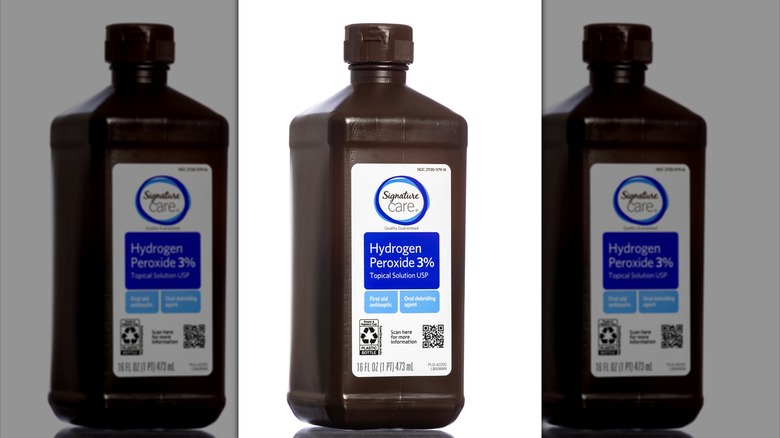The Natural Cleaner You Shouldn't Put On Your Dirty TV Screen (& What To Use Instead)
Cleaning electronics like your phone, computer, or TV is tricky because you want to do a thorough job but need to be careful due to their parts. The screens tend to get more focus during cleaning since streaks and smudges are unsightly, but it's easy to damage them with the wrong products or handling. When cleaning your TV screen, hydrogen peroxide is one of those products that should be avoided as their chemical contents can cause serious damage.
It's hard to ignore stains on the TV screen since you spend so much time looking at it, but cleaning also helps to disinfect the surface and eliminate germs. This is why hydrogen peroxide is typically considered. As a house cleaner, it can disinfect and clean the washing machine, toilet bowl, and kitchen boards, and used to tackle mold on walls. Hydrogen peroxide can also get rid of stubborn household stains like sweat on clothes and food and drink on carpets. However, electronic screens aren't built like these types of surfaces and are nowhere as resistant. Their wires, lights, and other internal parts can't be exposed to just any substance, so the utmost care is needed.
Hydrogen peroxide shouldn't be your first option
The safe route is to spray distilled water on a non-shed microfiber cloth and use that to wipe down the screen. Make sure the cloth is slightly damp and not fully soaked. This is an easy way to clean a TV screen without leaving streaks. In place of water, you can lightly use lens spray or a non-ammonia cleaner on the cloth. Before cleaning, it's good to turn off and unplug the TV and let it dry before turning it back on. It is much safer to clean and work on any electronic device when it's not powered up.
If you have to use hydrogen peroxide, make sure your mix is a ratio of one part to every nine parts of water. This minimal chemical content should be okay. After cleaning, wipe the screen with a slightly damp cloth so the hydrogen peroxide doesn't stay on the surface.

